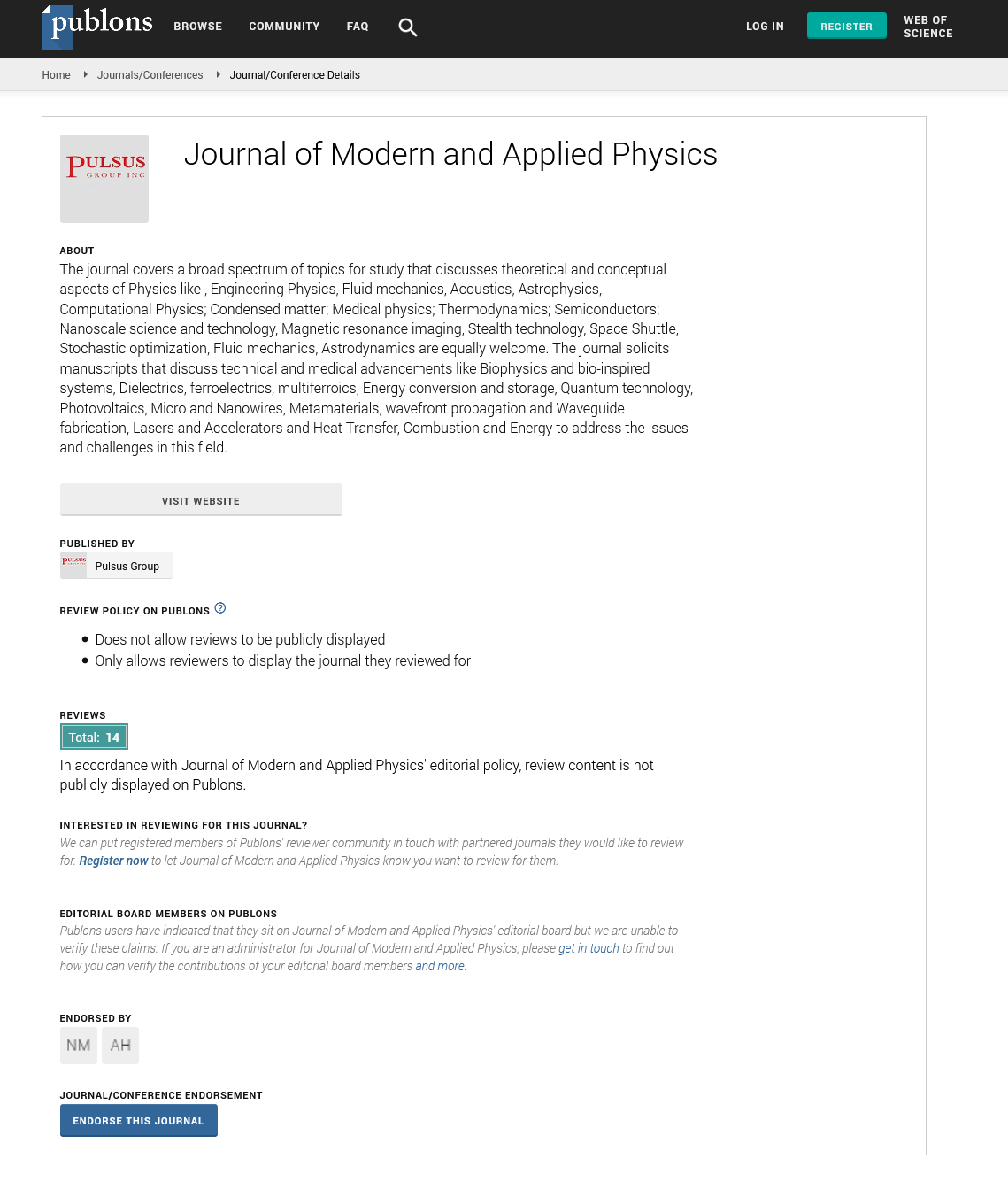Broadband semiconductor lasers
Received: 27-Dec-2017 Accepted Date: Dec 30, 2017; Published: 06-Jan-2018
Citation: Wang H. Broadband semiconductor lasers. J Mod Appl Phys. 2018;2(1): 01.
This open-access article is distributed under the terms of the Creative Commons Attribution Non-Commercial License (CC BY-NC) (http://creativecommons.org/licenses/by-nc/4.0/), which permits reuse, distribution and reproduction of the article, provided that the original work is properly cited and the reuse is restricted to noncommercial purposes. For commercial reuse, contact reprints@pulsus.com
Introduction
Semiconductor light sources with broadband and continuous spectrum, high-power and highly efficient are greatly attractive for many applications in sensing, spectroscopy, ultra-short pulse generation, and biomedical imaging. Previous broadband sources are mainly achieved by complex filtering systems, such as photonic crystal fiber based approaches with an expensive and bulky high-power laser as pump source. Then monolithic integration broadband semiconductor lasers have attracted significant attention because of their many advantages such as compact, efficient, cost-effective, etc. The semiconductor broadband sources usually fall into two classes, based on the operation mode, the superluminescent diode (SLD), working in the amplified spontaneous emission mode, and the broad inter-sub-band and inter-band laser diodes, and working in the stimulated emission mode. However, it is difficult for SLD to achieve high power, which may limit their applications.
The broad inter-sub-band and inter-band laser diodes have been widely researched. An InAs/GaAs ultrabroadband quantum dot (Qdot) SLD with a bandwidth of 110 nm [1] and an InAs/InP ultrabroadband quantum dash (Qdash) SLD with a bandwidth of 110 nm [2] have been reported with output power in few tens of mW. However, the relatively low power may limit their applications, accordingly the high-power stimulated emission laser diode is becoming the most attractive. The broad emission spectra generation mainly utilizes various active gain mediums. A broad stimulated emission ~40-nm full width at half maximum (FWHM) from hybrid InAs/ GaAs Qdots sandwiched by superlattices and thick cladding layers structure [3] and a broad stimulated emission ~50-nm FWHM from InAs-Qdashs and InGaAlAs-QW structure [4] have been reported.
Since QDot/Qdash exhibit unique electrical and optical properties such as high gain profile, low threshold current density, high speed modulation and high thermal stabilities compared with conventional quantum-well (QW) structures, changing the natural occurring size or composition fluctuation in Qdot/Qdash has been an exciting topic of research now, to achieve broad emission devices. And it is usually supposed to be difficult to achieve broad emission for quantum well.
Recently, the InGaAs/GaAs quantum well lasers have been reported that could be a more powerful alternative. The device emits up to 50 mW of pulsed 1.06 μm light.
with a large spectral bandwidth of 38 nm [5,6]. A 51-nm ultrabroad emission laser using InGaAs/GaAs QW structure [7] was also demonstrated after this. Unlike the conventional light emitting and laser diodes with a pin structure and only one active region, they inserted a GaAs tunnel junction between the two QW active regions to obtain high power. The laser exhibits a total power of 790 mW, corresponding to a high average spectral power density of 15.5 mW/nm, which is much higher than 3.5 mW/nm from Qdash broadband laser and 10 mW/nm from Qdot broadband laser.
The results from a quantum well broadband semiconductor laser are a step forward in achieving eventual ultrabroad emission devices with a much easier technological configuration and a much higher spectral power density. The results may also lead to the realization of more applications, such as mode locking with ultra-short pulse generation, biomedical imaging, broad wavelength tunability, and multiwavelengths generation.
REFERENCES
- Liu N, Jin P, Wang ZG. InAs/GaAs quantum-dot super luminescent diodes with 110 nm bandwidth. Electron Lett. 2005;41:1400-02.
- Djie HS, Dimas CE, Ooi BS. Wideband quantum-dash-in-well super luminescent diode at 1.6/spl mu/m. IEEE Photonics Technol Lett. 2006;18:1747-9.
- Djie HS, Ooi BS, Fang XM, et al. Room-temperature broadband emission of an InGaAs/GaAsInGaAs/GaAs quantum dots laser. Opt Lett. 2007;32:44-6.
- Khan MZM, Ng TK, Lee CS, et al. Chirped InAs/InP quantum-dash laser with enhanced broad spectrum of stimulated emission. Appl Phys Lett. 2013;102:091102.
- Wang H, Zhou X, Yu H, et al. Ultrabroad stimulated emission from quantum well laser. Appl Phys Lett. 2014;104:251101.
- Graydon O. Broadband lasers. Nat Photonics. 2014;8:675.
- Wang H, Yu H, Zhou X, et al. High-power InGaAs/GaAs quantum-well laser with enhanced broad spectrum of stimulated emission. Appl Phys Lett. 2014;105:141101.





